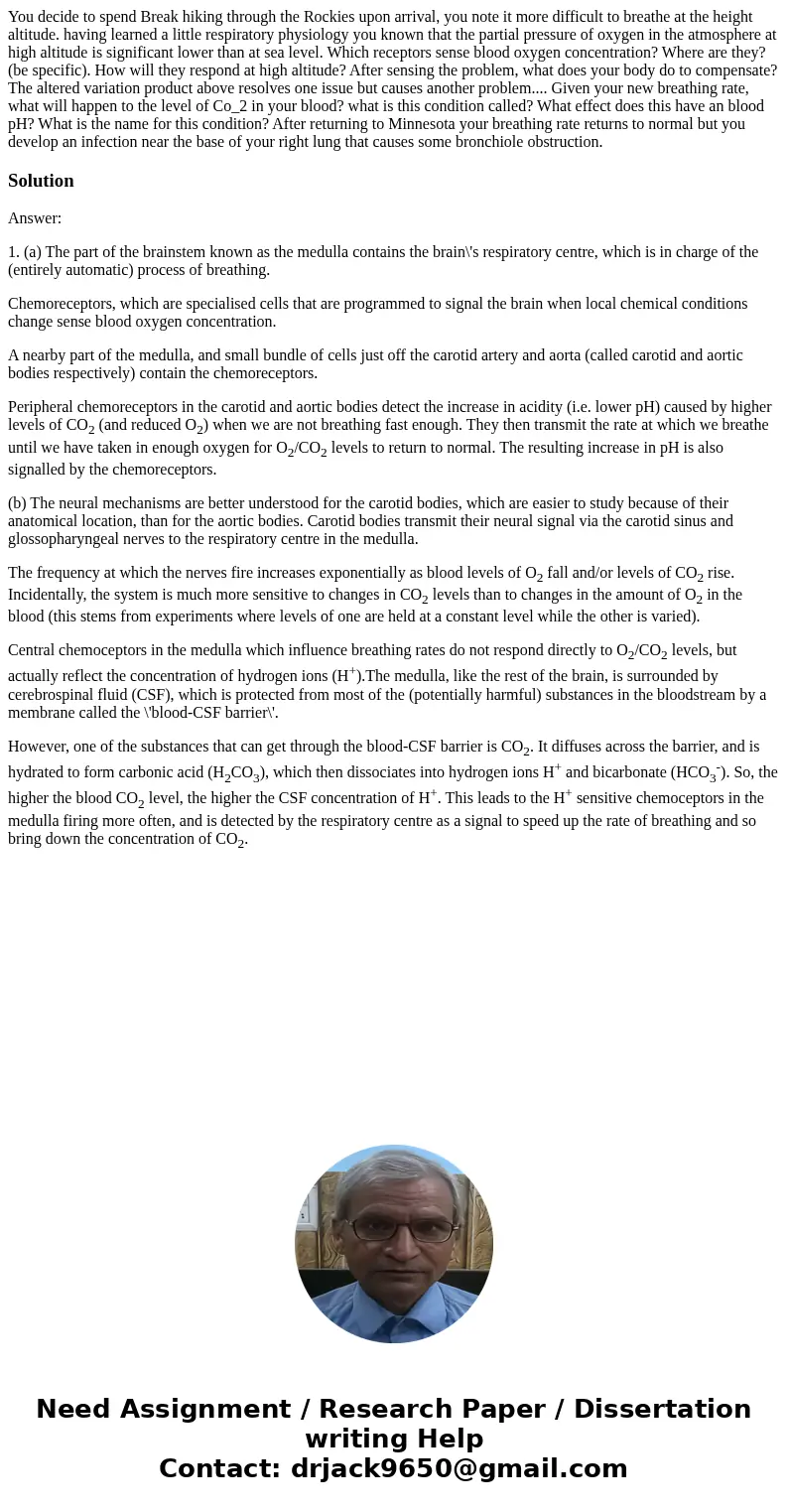You decide to spend Break hiking through the Rockies upon ar
Solution
Answer:
1. (a) The part of the brainstem known as the medulla contains the brain\'s respiratory centre, which is in charge of the (entirely automatic) process of breathing.
Chemoreceptors, which are specialised cells that are programmed to signal the brain when local chemical conditions change sense blood oxygen concentration.
A nearby part of the medulla, and small bundle of cells just off the carotid artery and aorta (called carotid and aortic bodies respectively) contain the chemoreceptors.
Peripheral chemoreceptors in the carotid and aortic bodies detect the increase in acidity (i.e. lower pH) caused by higher levels of CO2 (and reduced O2) when we are not breathing fast enough. They then transmit the rate at which we breathe until we have taken in enough oxygen for O2/CO2 levels to return to normal. The resulting increase in pH is also signalled by the chemoreceptors.
(b) The neural mechanisms are better understood for the carotid bodies, which are easier to study because of their anatomical location, than for the aortic bodies. Carotid bodies transmit their neural signal via the carotid sinus and glossopharyngeal nerves to the respiratory centre in the medulla.
The frequency at which the nerves fire increases exponentially as blood levels of O2 fall and/or levels of CO2 rise. Incidentally, the system is much more sensitive to changes in CO2 levels than to changes in the amount of O2 in the blood (this stems from experiments where levels of one are held at a constant level while the other is varied).
Central chemoceptors in the medulla which influence breathing rates do not respond directly to O2/CO2 levels, but actually reflect the concentration of hydrogen ions (H+).The medulla, like the rest of the brain, is surrounded by cerebrospinal fluid (CSF), which is protected from most of the (potentially harmful) substances in the bloodstream by a membrane called the \'blood-CSF barrier\'.
However, one of the substances that can get through the blood-CSF barrier is CO2. It diffuses across the barrier, and is hydrated to form carbonic acid (H2CO3), which then dissociates into hydrogen ions H+ and bicarbonate (HCO3-). So, the higher the blood CO2 level, the higher the CSF concentration of H+. This leads to the H+ sensitive chemoceptors in the medulla firing more often, and is detected by the respiratory centre as a signal to speed up the rate of breathing and so bring down the concentration of CO2.

 Homework Sourse
Homework Sourse